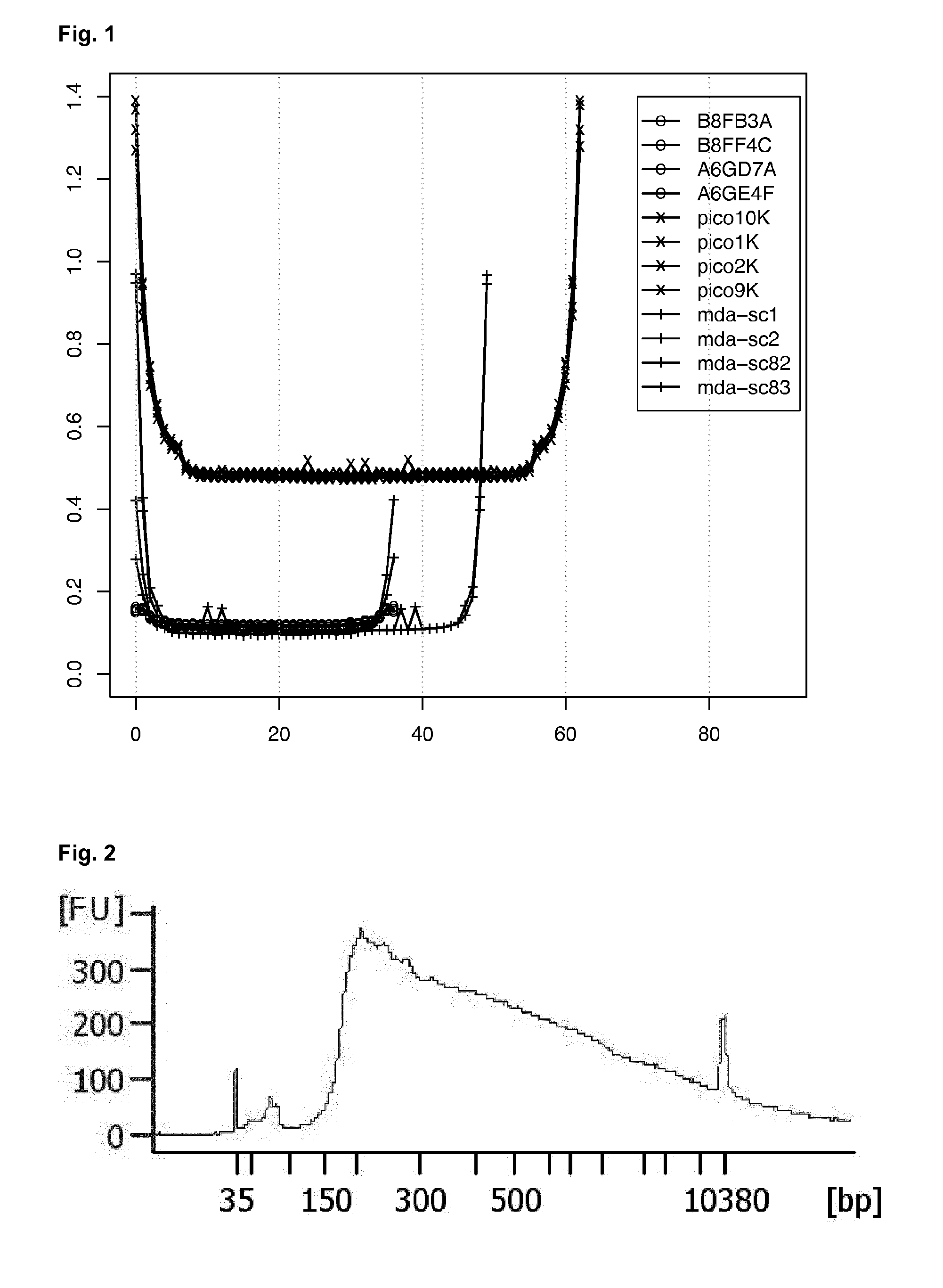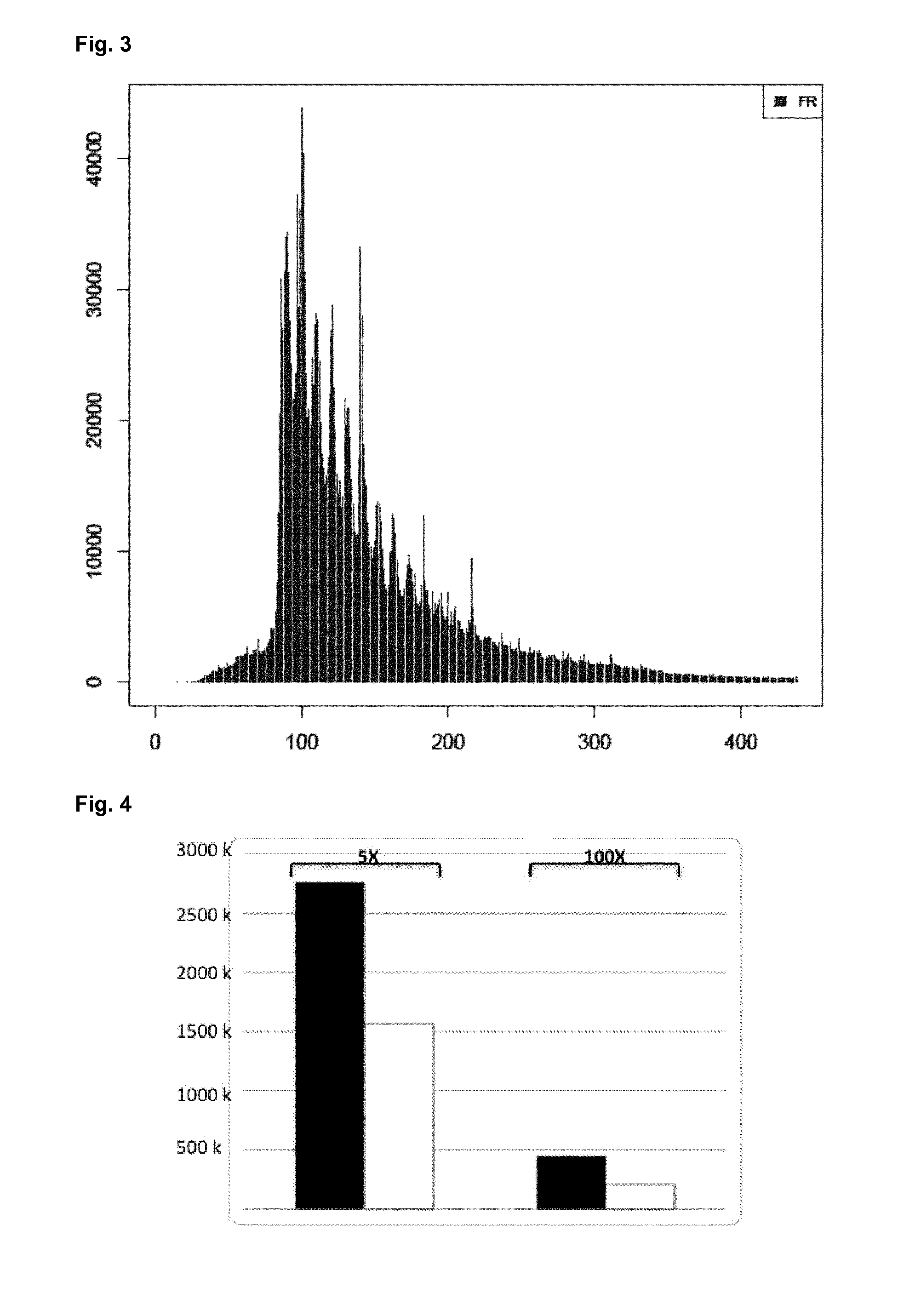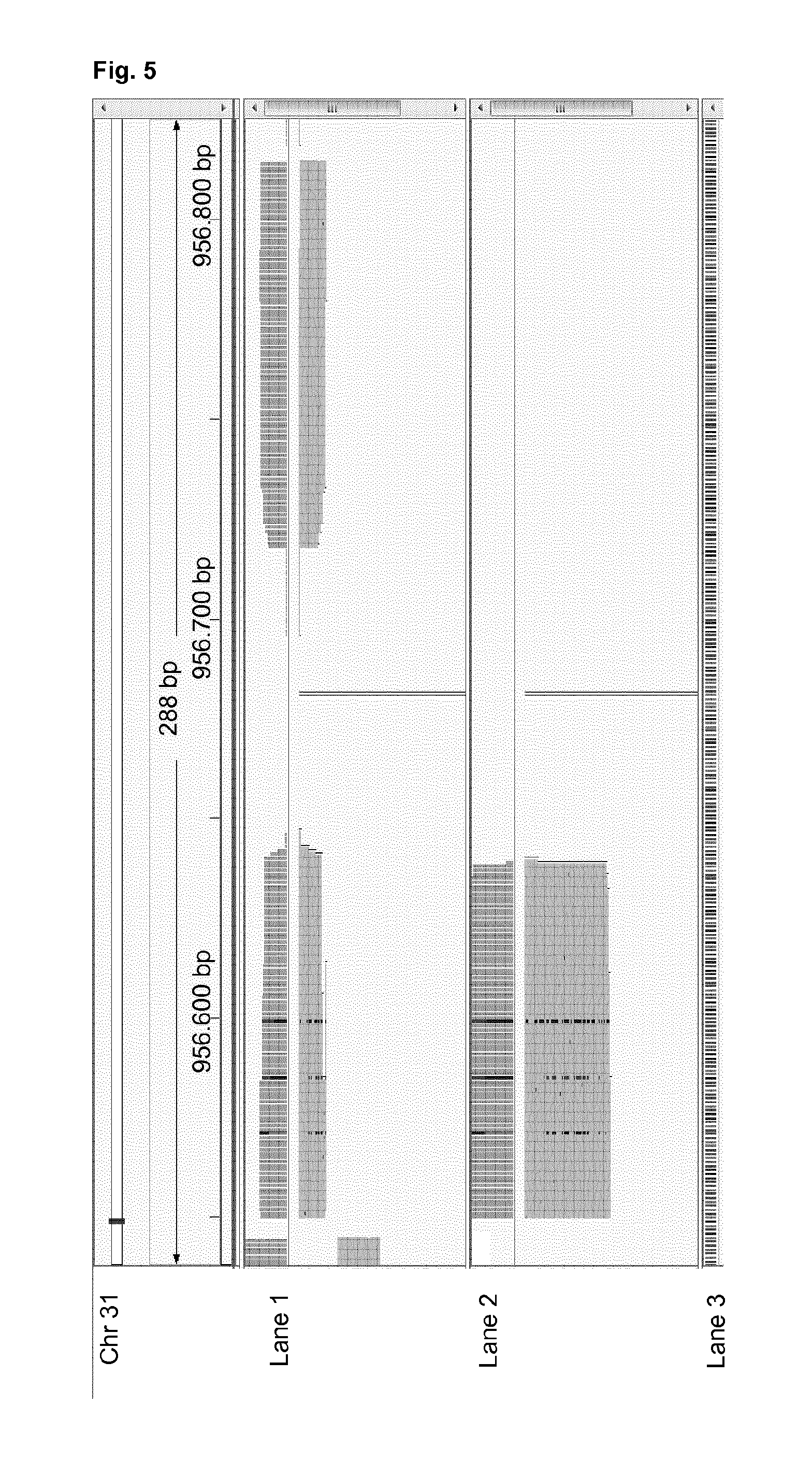High-throughput genotyping by sequencing low amounts of genetic material
- Summary
- Abstract
- Description
- Claims
- Application Information
AI Technical Summary
Benefits of technology
Problems solved by technology
Method used
Image
Examples
embodiment 1
2. The method of embodiment 1, whereby said amplifying is performed on the whole genome.
3. The method according to any of embodiments 1 or 2, whereby said amplifying is performed using whole-genome multiple displacement amplification or any whole-genome amplification method.
4. The method according to any of embodiments 1 to 3, the method further comprising constructing a reduced representation library of the amplification product for massively parallel sequencing and subsequent genotyping and / or haplotyping using bioinformatics and statistical means.
embodiment 4
5. The method , whereby the reduced representation library of the at least one cell's amplification product is produced by restriction digestion using at least one or a combination of restriction enzymes and subsequent adaptor ligation and size-selection by PCR-amplification, or any sequence library reduction method
embodiment 5
6. The method , whereby said sequence library reduction method is exon capture.
7. The method according to any one of embodiments 1 to 6, whereby said method further comprises the step of deep sequencing of the reduced representation library to assure that each variant position is sampled with high redundancy.
8. The method of any of embodiments 1 to 7, whereby the pipeline for variant calling is based on the detection of variant allele frequencies in the sequence reads that are discriminated from sequencing and / or amplification inconsistencies using a pipeline of sequence alignment, bioinformatics and statistics.
PUM
| Property | Measurement | Unit |
|---|---|---|
| Mass | aaaaa | aaaaa |
| Size | aaaaa | aaaaa |
Abstract
Description
Claims
Application Information
 Login to View More
Login to View More - R&D
- Intellectual Property
- Life Sciences
- Materials
- Tech Scout
- Unparalleled Data Quality
- Higher Quality Content
- 60% Fewer Hallucinations
Browse by: Latest US Patents, China's latest patents, Technical Efficacy Thesaurus, Application Domain, Technology Topic, Popular Technical Reports.
© 2025 PatSnap. All rights reserved.Legal|Privacy policy|Modern Slavery Act Transparency Statement|Sitemap|About US| Contact US: help@patsnap.com



